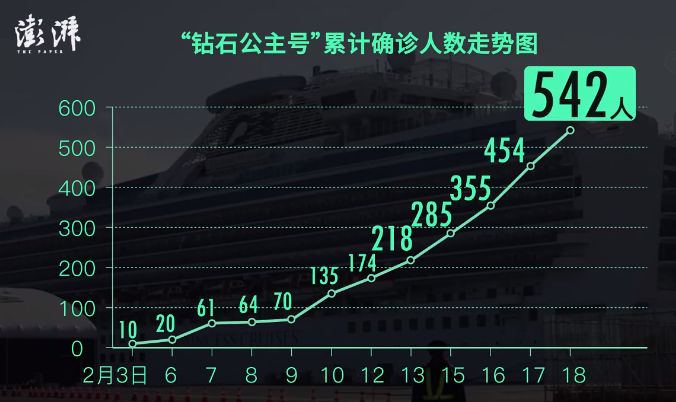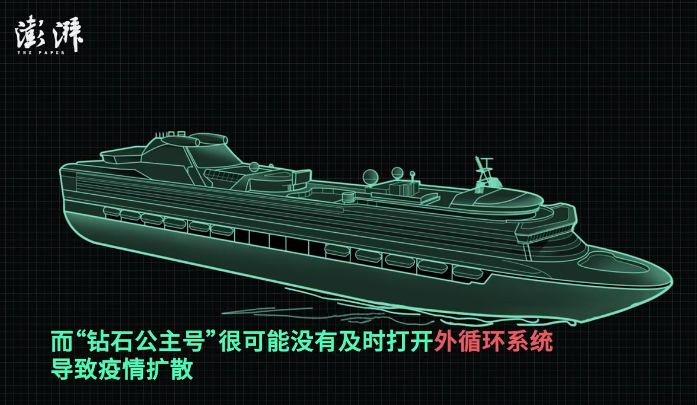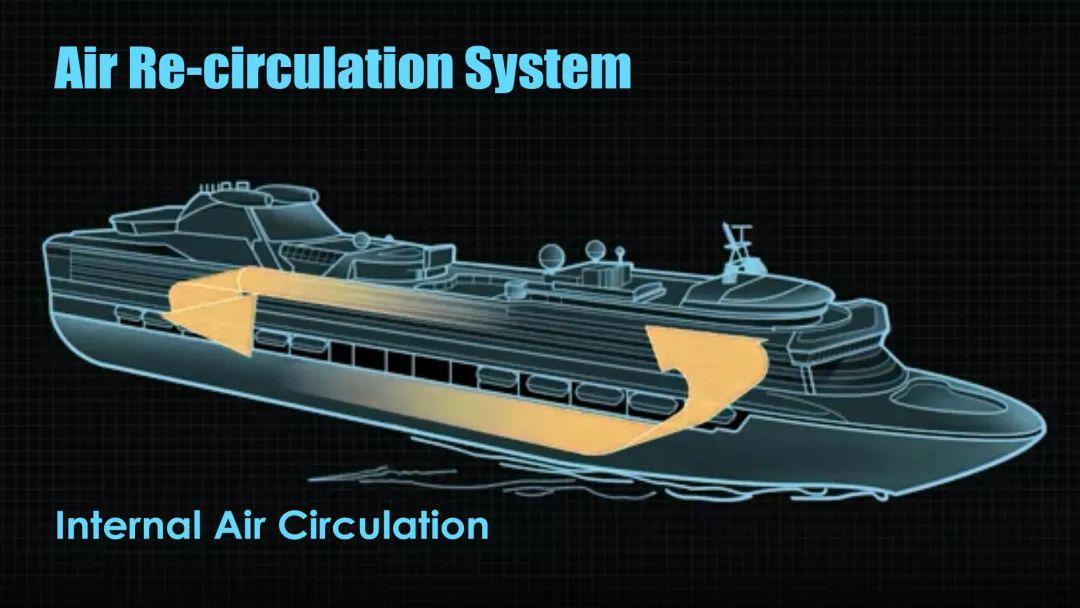原标题:14.9%的感染率,“钻石公主号”为何成为重灾区?
2月19日,停靠日本横滨的“钻石公主号”邮轮隔离期满,首批500名新冠病毒核酸测试结果为阴性的乘客下船。截至当地时间18日23时,“钻石公主号”共确诊542例。在隔离筛查之前,船上总共有3711人,感染比例高达14.6%。当地时间18日,日本厚生劳动相加藤胜信表示,“钻石公主”号邮轮所有乘客的新冠病毒取样工作已完成,预计21日,所有检测呈阴性的乘客都将下船。

据香港媒体报道,截至2月18日,确诊542例中包括53名香港居民。香港特区政府2月19日派出包机,将把病毒检测结果为阴性、且无发烧等症状的香港居民接回。
另外,据日本政府表示,当地时间17日早上,有328名美国人下船,并在7时从东京羽田机场出境。美国国务院称,在这部分人员中,新查明14人感染新冠肺炎,但允许他们搭乘包机,并在机舱内采取了特别隔离措施。
此外,加拿大、意大利、以色列、澳大利亚等各方也正准备通过包机将滞留乘客接回本国或地区。

整艘船14.9%的感染率,钻石公主号为何成重灾区?
一些专家怀疑,“钻石公主”号邮轮隔离措施不太严格。
伦敦大学国王学院疾病专家纳塔莉·麦克德莫特推断,船上的“隔离措施明显没起作用,这艘船现在已成为传染源”。如果隔离措施得当,“没有理由不起作用”。
她告诉美联社:“我们需要了解船上如何执行隔离措施、船上的空气过滤系统如何运转、各舱室如何相连、以及垃圾如何处理。”
尽管日本政府再三辩驳邮轮隔离措施有效,但仍有人认为政府此举不合格。此前3名日本卫生官员协助邮轮进行隔离核查,结果也被感染。这表明邮轮内部可能存在管理松懈的迹象。



Ventilation inside each cabin is regulated by central air-conditioning。 There are two types of circulation functions of air conditioners。 One is the air refresh system, in which exchange between interior and exterior air is achieved in order to adjust the temperature inside the cabins。 The other is the air re-circulation system, through which temperature adjustment through the air re-circulation system。
Although the first system provides fresh air for the passengers, an option that could create much healthier conditions, it does consume much more energies。 The air re-circulation system, on the other hand, creates a scenario in which the air flowing in from the air conditioning is the air flowing through many passenger cabins and therefore passengers, although confined to their chambers, may be exposed to a turbid flow of air。 It is likely that the Diamond Princess failed to turn on the air refresh system in time, which resulted in the spread of the virus。
But a number of experts have doubted this assertion。 They said it is likely that infections happened mostly before the imposition of the quarantine。

正如专家指出,工作人员也可能是病毒深度渗透的原因之一,因为他们接触到大量可能感染病毒的乘客,一旦工作人员感染了病毒,他们很容易成为病毒的传播者。
世界卫生组织前西太平洋地区主任尾身茂指出,船上工作人员没有像乘客一样接受隔离,他们“同吃同住,这是隔离开始后一些人感染病毒的原因”。
就“钻石公主”号上病毒传播速度快,世界卫生组织卫生紧急项目主管迈克尔·瑞安解释,“有时候疾病在一些环境中就是能更快速传播,比如邮轮。”
他表示,相信日本政府以及接回本国公民的其他国家政府“有能力以恰当方式继续跟进这些人”的健康状况。
尾身茂说,病毒传播早期,隔离是有效抑制传播的措施。他建议,随着病毒逐步进入日本社区,日本政府应当把重点从边境管控转移至阻止病毒在社区内传播。
As experts endeavor to find an alternative explanation to account for the failure of virus prevention, they turn the focus onto quarantine measures。
While the Japanese government has repeatedly defended the effectiveness of the quarantine, some suggest it may have been less than rigorous。 Three Japanese health officials who helped conduct the quarantine checks on the ship were also infected, indicating a possible sign of lax protocols。
“There are sometimes environments in which disease can spread in a more efficient way,” said Dr。 Michael Ryan, executive director of the World Health Organization‘s health emergency program。 Ryan said cruise ships, in particular, were known to occasionally accelerate spread。
